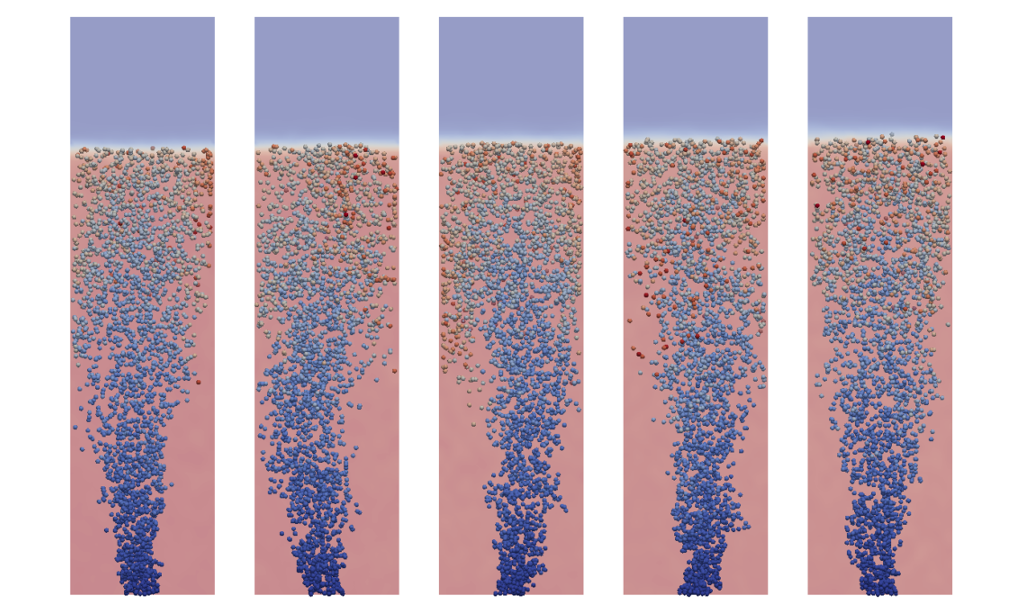Abstract
Bubble column reactors are widely used in the chemical and biochemical process industries, but numerous examples can be found in petroleum, pharmaceutical, agricultural, biochemical, food, electronic, and power-generation industries. The ability to predict fluid dynamics is of paramount importance in designing and developing bubble column reactors. Flows in industrial bubble columns can be simulated using Euler-Euler (E-E) or Euler-Lagrange (E-L) approaches. The E-E approach describes both phases as two continuous fluids, each occupying the entire domain, and interpenetrating each other. The conservation equations are solved for each phase together with interphase exchange terms. The E-E approach can suffer from numerical diffusion. However, with the aid of higher order discretisation schemes, the numerical diffusion can be reduced sufficiently and can offer the same level of accuracy as the E-L approach. The advantage of the E-E approach is the lower computational costs, particularly when a large number of bubbles are involved. In the E-L approach the continuous liquid phase is modelled using an Eulerian approach and the dispersed gas phase is treated in a Lagrangian way; that is, the individual bubbles in the system are tracked by solving an equation for Newton’s second law, while accounting for the forces acting on the bubbles. An advantage here is the possibility to model each individual bubble, also incorporating bubble coalescence and breakup directly. Since each bubble path can be calculated accurately within the control volume, no numerical diffusion is introduced into the disperse phase computation. However, the larger the system gets, the more equations need to be solved, that is, one for each bubble.
In this work, three-dimensional transient simulations of gas-liquid bubble flow – employing the Euler-Lagrange approach with LES – are applied to the case of a square cross-sectioned bubble column. The sensitivity of the sub-grid scale model to the model constant c_k and the applicability of various interfacial drag and lift force coefficient models are studied. All numerical results are compared with experimental measurement data.

